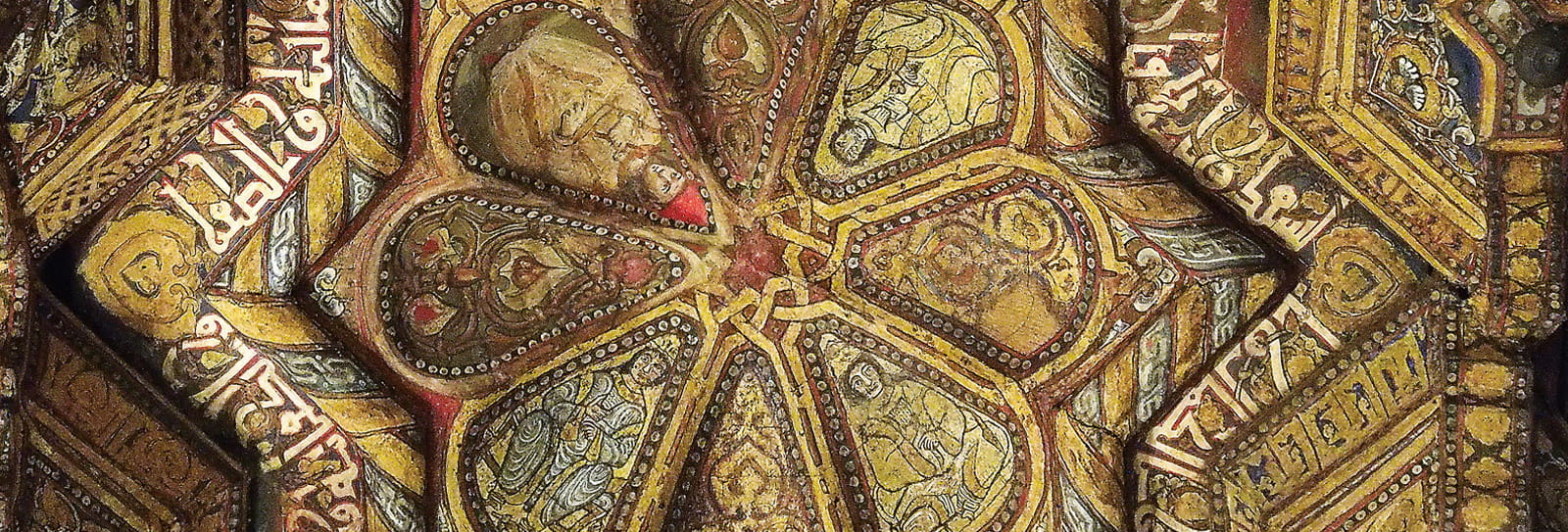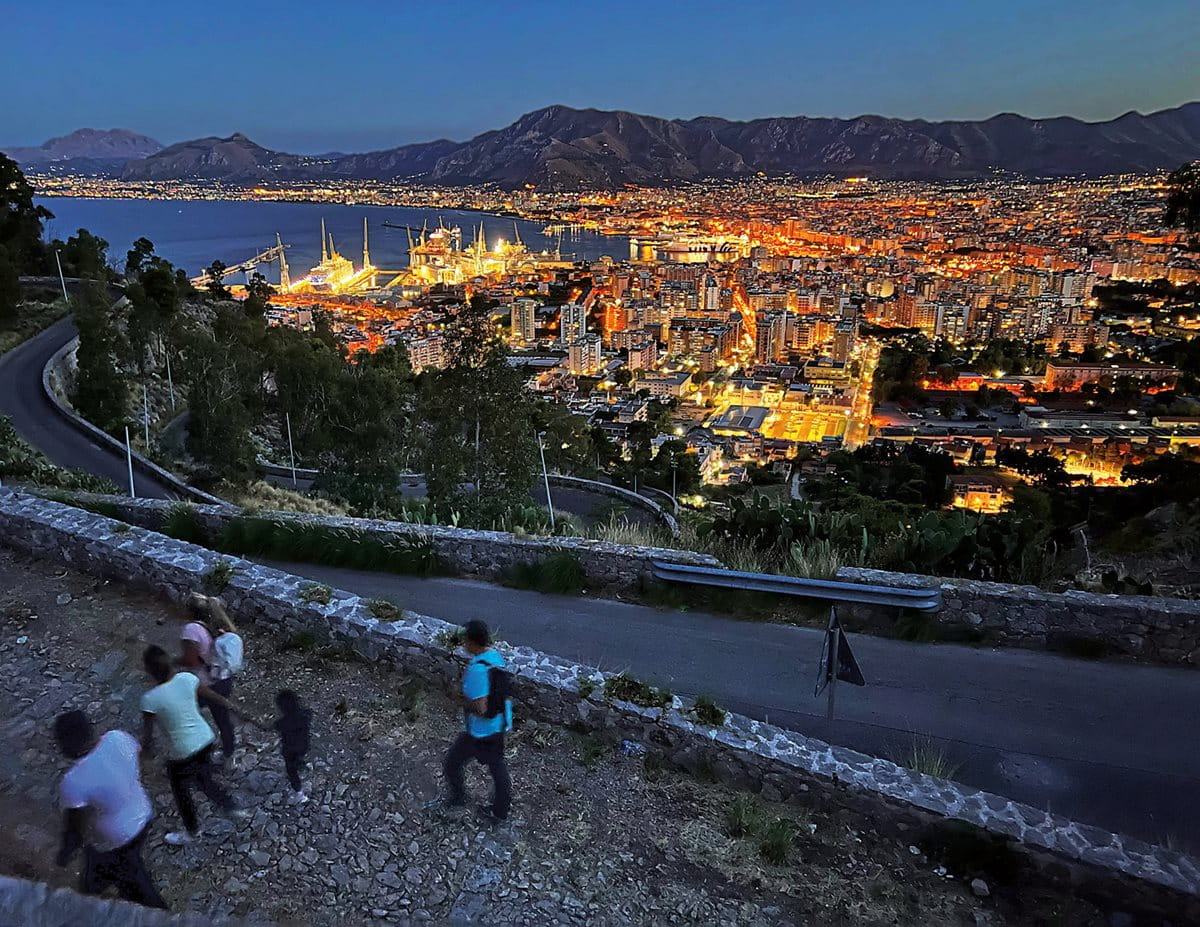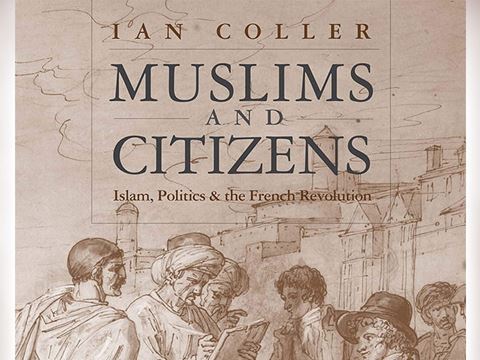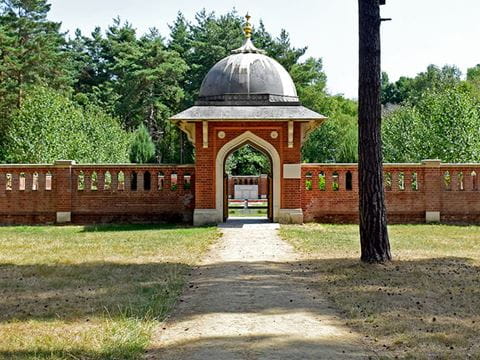
Palermo, Sicily: Where Cultures Collided and Still Coexist
As the Mediterranean Sea's largest and most central island, Sicily has lured invaders, traders and travelers since antiquity, and each one has left its layers of legacy. From the ninth to the 12th century, Arabs and Normans dominated the island. Along its western coast, in its capital Palermo, the Arab-Norman royal court of King Roger I rose to become one of the most influential seats of power of its time. Since 2015 the UN has recognized a set of nine buildings whose syntheses of Byzantine, Arab and Norman designs epitomize the best of a time whose multiculturalism remains a foundation for Palermo today.
“The Mediterranean is not an empty space filled with water. It is like a brain full of ideas.”
—Stefano Piazza
“Everything here speaks to layering, of a cultural intermingling.”
—Rossella Corrao

The Mediterranean Sea was since times of old the easiest way to travel across the then-known world, given the difficulties that traveling by land entailed, and mainly because it established connections to the most important ports of Europe, West Asia and North Africa.
Commanding the center of these waters that Romans called Mar Medi Terraneum (Sea Among Lands) and Arabs named al-bahr al-abyad al-mutawassit (The White Middle Sea), lies its largest island, Sicily. Over the centuries one of the most disputed places and home to some of the Mediterranean’s most important actors of history, Sicily has been throughout a vortex of conquests, commerce and culture. On its western coast lies its capital, Palermo, a kind of historical resonance box echoing still with traces of settlers whose overlaid identities give the city its unique and even exemplary character.

“The Mediterranean has always been a point of confluence of the many civilizations of the Old World,” says Stefano Piazza, professor of art history at the University of Palermo. “Every people has poured onto our shores their influences, sometimes assimilated, and others overlapped, giving as a result the Mediterranean nature, a unique kind of transmitting antenna to all its environment. The Mediterranean is not an empty space filled with water. It is like a brain, full of ideas, cultures, materials and all kinds and people.” And Palermo “reflects this condition.”
Taking this as Sicily’s foundation, its history offers few tranquil tales. Yet this has helped Sicily, and Palermo in particular, to realize the potential of multiculturality, explains former mayor of Palermo Leoluca Orlando, who was elected in 1985 and re-elected four times until last year. “Culture can reach what politics cannot. Our history and the legacies of the past are our future,” he says.


First to Sicily’s shores came Phoenicians, followed by Greeks, Carthaginians, Romans, Vandals and, from the mid-fifth century CE, the Eastern Roman Empire from Constantinople (Byzantium). In the latter ninth century CE, the Muslim Arab-Berber Aghlabid dynasty, from Kairouan in what is now Tunisia, concluded more than a century of raids by taking first Sicily’s southwest and then its eastern city of Siracusa (Syracuse) into the expanding Dar al-Islam. They set up their capital in the port city the Greeks had named Panormo, and they Arabized its name to Balarm: Today’s Palermo is, characteristically, a synthesis of both. The Aghlabids put into practice ways that had proven largely successful with other Arab conquests. They permitted freedom of worship, and they allowed Christian churches and monasteries to carry on traditions of Hellenistic scholarship. They brought advances in agriculture, science, urban administration and water management. They broke up large properties according to Islamic law to create more smaller properties to be managed by farmers who introduced crops like cotton, papyrus, pistachios, rice and date palms. Citrus fruits especially flourished, and since no one today seems to remember when, the Palermo basin has been known as the Conca d’Oro (Golden Basin), due to the color that its many orchards of lemons and oranges added to the landscape.
The revolution of agriculture boosted the economy, and Sicily became again, as it had been in Roman times, the leading granary of Europe.



In construction, says Piazza, “the Arabs found sort of a huge store where they could get either inspiration or technical solutions, which sometimes they improved,” all thanks to the abundance of Roman stone works. Arabs brought their own technologies, too, particularly in hydraulic infrastructure. Instead of Roman-style aqueducts and pools, which are prone to evaporation, they built qanats, or channels that ran both underground and at ground level. These made possible great tracts of agriculture as well as gardens where water not only cooled and decorated, but also brightened spaces in ways not seen before in Europe, except in what was being developed around roughly the same time in al-Andalus, or Muslim Iberia.
Arab power in Sicily began to weaken in the 10th century with the rise of the Fatimid dynasty, which displaced the Aghlabids in North Africa, declared a caliphate and in 969 CE moved its capital to Egypt. It was not long until the Greeks returned to Sicily, this time by the hand of their allies from the north: the Normans.
In 1061 CE the Normans began their invasion of Sicily, having already taken control of much of southern Italy. Their origins were Viking but their name came from the Duchy of Normandy in France. The Normans declared Palermo a Christian capital in 1072, and a generation later, in 1130, the son of the conquest’s leader was crowned King Roger II of Sicily. His realm was the third largest in Europe, and the event marked the beginning of what became Sicily’s brightest age of cultural layering. Educated by Greek and Arab tutors, Roger II had grown up in a cosmopolitan society, and his court became a crucible of Sicily’s Latin, Byzantine, Greek, Islamic and Norman influences, a center of knowledge for scholars and discussions in French, Latin, Greek and Arabic.
As Arabs had done with the remains left by Romans, the Normans also adopted, appropriated and adapted not only Arab infrastructures but under Roger II, especially, they reaped the benefits of Arab statecraft, public administration, architecture, engineering and crafts. The court of Roger II became one of the most eclectic in the region’s history, a compendium of people whose echoing legacies show their eagerness to learn from each other.

One of the clearest examples is Giorgio of Antioch, an admiral of Roger II who was also an architect and an Arab Christian from Syria. He directed the construction of the church of Santa Maria dell’Ammiraglio, also known as La Martorana, which stands today in downtown Palermo as a testament to architectural palimpsest: Byzantine mosaics adorn Arab pointed arches and ribbed vaults above, while geometric mosaics on the floor show both Roman and Arab influences. On one of the church’s columns there is an inscription, in Kufic Arabic script, that quotes the Qur’an—and it is one of two such columns with Qur’anic inscriptions in a church in Palermo. (The other is in the city’s cathedral.)
This church is one of Palermo’s many open books about how Normans understood Islamic art as well as the architectural features that later would evolve toward the European Gothic, Piazza explains. “Normans were mainly warriors and conquerors. Their first artistic realizations were very primitive. However, once they regained security and were fully established in Sicily, they started to grow, especially under Roger II.” They too reused Roman materials: cupolas, columns and especially “materials like porphyry, a type of igneous rock considered by Romans the most noble of materials that they used to convey the sense of eternity, as a way to remain in people’s memory and also to show royal power.”

“Our history and the legacies of the past are our future.”
—Leoluca Orlando, former mayor of Palermo

In the 12th century, the continuing Islamic expansion throughout the North African coasts and the south of Iberia reinforced Sicily’s role both as a crossroads and a frontier, a boundary land among Latin and Byzantine Christendom and Muslim realms of the Mediterranean. With official languages of Latin, Greek, Arabic and some Romance languages like French and that of Puglia, Arab-Norman Sicily was the leading place in its time showing that conviviality was possible—much as Palermo does today, where the streets and markets resonate with new, 21st-century polyglot combinations.
One of the only descriptions of Sicily prior to the Norman conquest comes from the 10th-century chronicler from Baghdad, Ibn Hawqal, who described the high degree of Sicily’s development in his work Surat al-‘ard (Face of the Earth). He highlighted how habits and customs melded in a heterogenous capital: “The city had around three hundred mosques, most of them being in the lord’s palaces, in the fashion of the Christians’ private chapels.”

From the years of Roger II there are a few Arab sources, including Ibn Jubayr, a geographer, writer and chancellor secretary of the Almohad ruler of Granada in al-Andalus, who visited Palermo in 1184 CE as he was returning home from Makkah. Ibn Jubayr provided testimony about how Muslim people lived in the Christian kingdom, how administration was handled and, through many personal interviews, made a description of towns, palaces, and other structures. He wrote that Palermo is the metropolis of the islands, combining the benefits of wealth and splendor, and having all that you could wish of beauty, real or apparent, and all the need of subsistence, mature and fresh. It is an ancient and elegant city, magnificent and gracious, and seductive to look upon. Proudly set between its open spaces and plains filled with gardens, with broad roads and streets, it dazzles the eyes with its perfection. It is a wonderful place, built in the Córdoba style, entirely from cut stone known as kadhan [limestone]. A river splits the town, and four springs gush in its suburbs.… The Christian women of this city follow the fashion of Muslim women and are fluent of speech, wrap their cloaks around them and are veiled.
Twentieth-century historian Julius Norwich, who wrote two magisterial works on Sicily, wrote that Norman Sicily “stood forth in Europe—and indeed in the whole bigoted medieval world—as an example of tolerance and enlightenment, a lesson in the respect that every man should feel for those whose blood and beliefs happen to differ from his own.”

As one of the most important Mediterranean commercial centers, the port of Palermo became crowded, full of markets, traders, languages, identities as well as smells, colors and flavors, much like what can be still relished today, from Arab-style arancine—fried balls of rice and fillings—to new fusion restaurants such as Molti Volti (Many Faces), which offers cuisine by chefs from Senegal, The Gambia, Morocco, Cote d’Ivoire and Italy. Opened in 2014 under the motto “La mia terra é dove poggio i miei piedi” (“My land is where I put my feet”), co-founder Claudio Arestivo explains that “food is one of the most interesting ways to represent multiculturality.”
For his restaurant, he says, “We wanted to allow diversity to have its own voice. We have different chefs from diverse nationalities—from Africa to Asia as well as European. Because this is the reality we are living and understanding, that our community is composed not only by Italian families, but of families from around the world, and this is the only possible way to comprehend the complexity of our society.”
The best example of this, he adds, is the enduring popularity of couscous, originally of North African origin. “If I could offer one dish to Roger II today, I would choose couscous with fish. For couscous arrived here in his times, and now it is a very common meal in Sicily.”


In 2015 the city secured global recognition for its palimpsest style when the United Nations Educational, Scientific and Cultural Organization (UNESCO) declared an ensemble of seven buildings in Palermo and two outside the city as a suite of World Heritage Sites that show the “Western-Islamic-Byzantine syncretism that characterized the Norman kingdom of Sicily.” This, UNESCO declared, “created new spatial, constructive and decorative concepts” from origins that also included Latin, Jewish, Lombard and French.
The designation not only makes the city’s heritage more visible to tourists, who have begun to return with the easing of COVID-19 restrictions, but also sparks other projects, explains Lucio Tambuzzo, a Sicily native as well as artistic director of iHeritage, a pan-Mediterranean program that uses digital technologies including Augumented Reality and 3D immersion to promote heritage appreciation, conservation and sustainable development. Implemented by the European Union’s European Neighbourhood Instrument (ENI) and inaugurated in 2020, the city of Palermo acts for Sicily as team leader with national partners Spain, Lebanon, Portugal, Egypt and Jordan.
“Mediterranean people are all part of a unique, multifaceted, intertwined and indivisible culture where diversity is its highest value.”
—Lucio Tambuzzo, Artistic Director, iHeritage

“It is very important for Sicily to take part in European projects such as iHeritage,” he says. Palermo “summarizes the contributions of the different cultures and religions in the Mediterranean, and this clearly crystalizes in the Arab-Norman period, the reason why the sites of the UNESCO that have been included in the iHeritage project belong to this period. The rest of the selected UNESCO sites in the Mediterranean area will thus be connected through a network, to share learning and good practice experiences.”
Through iHeritage, Tambuzzo also created the Mediterranean region’s first register of intangible cultural heritage, based on UNESCO’s global criteria. “This clearly shows that we, the Mediterranean people, are all part of a unique, multifaceted, intertwined and indivisible culture where diversity is its highest value. I am sure that Arab-Norman King Roger II would be enthusiastic with this initiative, given the curious, innovative, and visionary man he was.”
Rossella Corrao, a professor of architectural engineering at the University of Palermo, collaborates with iHeritage as an expert adviser. “It is very important that the new generations get to know the meaning and value that historic patrimony has, and it is our duty to use the right tools to make them love and appreciate their historical sites as a part of themselves,” she says.
Of the nine sites on UNESCO’s list in Palermo, one stands apart in its capacity to overwhelm visitors of all ages and backgrounds: the Capilla Palatina (Palatine Chapel), built inside the Norman royal palace and finished under Roger II.
“It is really difficult to know which are the original parts and which were restored or added,” Corrao says. “Everything here talks of the layering of cultural intermingling, a sort of cultural mosaic.” Corrao suggests looking at the chapel as “a message that would endure and transcend time.” Here meld the best of Latin, Byzantine and Arab traditions, in both design and the languages of inscriptions that appear in Latin and Greek on the walls, arches and domes and in Arabic high on the spectacularly coffered, elaborately painted muqarnas ceiling.

To Piazza, the ceiling exemplifies “the purest Islamic style, inconceivable for a church,” and that in its beauty, “it constitutes the glorious crown of the site.”
In 2018 Italy named Palermo its Capital of Culture, after its selection to also host the European Biennial of Contemporary Art. The Sicilian capital, says Dario Franceschini, who served as Italy’s minister of culture at the time, has come to “gain new importance, because of its growth in the fields of culture and tourism,” and “this virtuous competition has created a system of communal participation.”
Former mayor Orlando has long advocated community participation and work as ways to bring out the strengths in multicultural societies. The city’s rising profile comes within its long and broad context at the center of the Mediterranean. “More than just an idea or an intention,” he says, Palermo is a true “capital of cultures—cultures that have found in our city the place for their own coexistence, dialogue and mutual enrichment.
“I have always held that there are no ‘immigrants’ in Palermo,” Orlando adds. “If they live here, they are then Palermitans. We should embrace the same spirit as in the glorious past when multiculturality, our natural state all our history long, meant progress and growth. We should give Palermo the chance of sending a message. Our history is our future.”
About the Author

Ana M. Carreño Leyva
Ana M. Carreño Leyva lives in Granada, Spain, where she is a translator of modern languages and a freelance writer who specializes in the diverse cultural heritages of al-Andalus and the Mediterranean region.
Richard Doughty
Richard Doughty is editor of AramcoWorld. He holds a master’s degree in photojournalism from the University of Missouri.
You may also be interested in...

Australian Author Ian Coller on Muslims and the French Revolution
History
It wasn’t until he found himself thousands of kilometers from his native Australia in September 2001 that Coller, a UCLA-Irvine professor of history, began to realize that his seemingly disparate early interests in French culture, Charles Dickens’ A Tale of Two Cities, his longing to understand the Middle East and his determination to speak Arabic were all parts of his innate fascination with people.
Britain’s Muslim Heritage Trails
History
Not far from London, newly inaugurated walking routes trace some of the first Islamic patronages and cultural contributions to the UK. The trails start at the country’s first purpose-built mosque and lead to two cemeteries—one dedicated to nearly forgotten Muslim veterans and the other the resting place of several dozen British Muslims, more than a few of them leaders in their fields. While the sites owe their origins to a 19th-century linguist, the trails have come about through collaborations among a local journalist, the London-based nonprofit Everyday Muslim and the town of Woking. All have teamed up so visitors can walk the paths of stories that hold “the potential to change Britain’s popular historical narrative.”
Part One From Pilgrim to Traveler: Tangier to Makkah
History
In 1325, Ibn Battuta was an aspiring Moroccan jurist who set out for Makkah along the North African coast, passing through Cairo and Damascus. But when the rites of the Hail ended, he didn’t go home: He continued east.